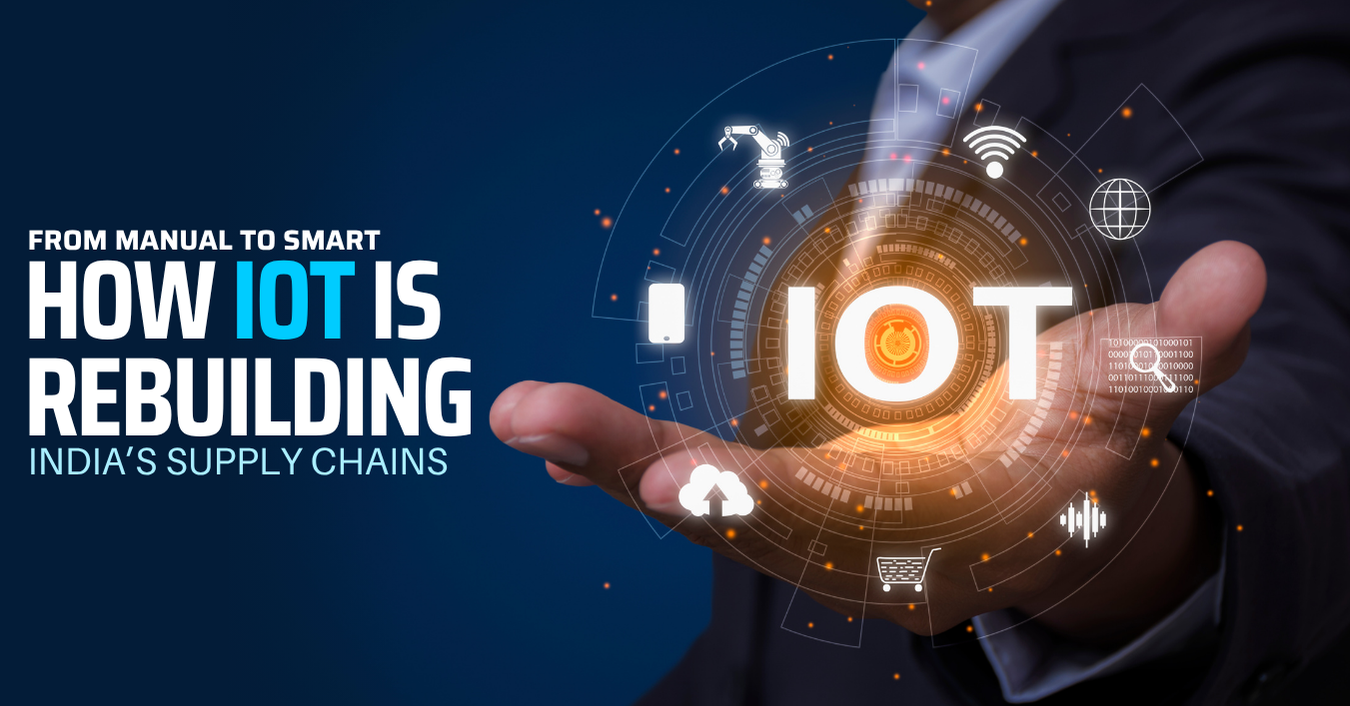India’s supply chains have long been held back by fragmentation, manual systems, and lack of real-time insight. But now, thanks to the rise of the Internet of Things (IoT), a silent transformation is underway — one that’s turning trucks, warehouses, and inventory shelves into intelligent, connected systems.
This blog explores how IoT is being used to modernize supply chains across India, the challenges it solves, and what the future holds for logistics in a rapidly digitizing economy.
🌐 What is IoT in the Supply Chain?
IoT (Internet of Things) refers to devices connected to the internet that gather and transmit data. In supply chains, these devices are embedded into:
Vehicles (to track location, temperature, and fuel usage)
Warehouses (for real-time stock levels and smart shelving)
Containers & pallets (for geo-tracking and security)
Factory equipment (for predictive maintenance)
Together, these devices allow businesses to monitor, manage, and optimize their supply networks remotely and instantly.
🚛 The Indian Supply Chain: Why It Needed a Digital Overhaul
India’s supply chain has historically struggled due to:
Manual record-keeping
Poor last-mile visibility
Cold chain inefficiencies for perishables
Lack of automation in warehousing
For example, a mango farmer in Maharashtra shipping his produce to a retail chain in Delhi depends on multiple touchpoints — truckers, loaders, wholesalers, cold storage operators — most of whom work independently and manually. This creates delays, spoilage, and often financial losses.
IoT bridges these gaps by making the entire process transparent and traceable.
📊 Key Applications of IoT in Indian Supply Chains
| Application | Impact |
|---|---|
| Real-Time Fleet Tracking | Reduces delivery delays, improves routing, saves fuel |
| Cold Chain Monitoring | Maintains safe temperature for vaccines, dairy, fruits, seafood |
| Smart Inventory Systems | Detect low stock, prevent overstocking or shrinkage |
| Geo-Fencing & Asset Safety | Alerts for route deviation or unauthorized access |
| Predictive Maintenance | Equipment health monitoring in factories and delivery vehicles |
🏢 Real Brands Making It Work
Mother Dairy uses IoT sensors in milk tankers to ensure safe temperature control from village collection centers to urban plants.
BigBasket tracks its delivery vehicles in real-time, enabling faster and more reliable grocery shipments.
TVS Logistics has digitized its transport and warehouse systems using IoT, reducing fuel wastage and downtime.
Delhivery, a logistics unicorn, leverages IoT to optimize warehouse operations and shipment tracking at scale.
These companies prove that real-time visibility leads to better decisions — and ultimately, better service.
🧠 How It Helps Businesses
✅ 1. Smarter Planning
With live data on delivery times and inventory levels, companies can plan demand and procurement more accurately.
✅ 2. Cost Efficiency
Fuel wastage, manual errors, and spoiled goods are major costs — IoT helps reduce all of them through automation and predictive alerts.
✅ 3. Better Customer Experience
When customers can track their orders or know exact delivery times, satisfaction improves — especially in B2C and e-commerce.
✅ 4. Resilience
During unexpected events like strikes or weather disruptions, businesses with IoT-enabled systems can re-route shipments instantly.
📶 Challenges in Indian Context
Despite the benefits, adoption is still evolving. Key hurdles include:
Connectivity gaps in remote areas
Initial hardware costs
Lack of skilled manpower to operate IoT platforms
Resistance from traditional players in transport and warehousing
However, with Jio’s 5G rollout and increasing smartphone penetration even among truckers, many of these issues are gradually easing.
🔮 The Future: Connected, Predictive & Autonomous
In the next five years, IoT will move from simply tracking goods to predicting supply chain behavior. Imagine:
Smart containers rerouting themselves based on traffic or weather data
Drones inspecting warehouse stock levels
AI algorithms auto-ordering parts based on usage patterns
Government initiatives like Gati Shakti and Digital India are expected to support this vision by improving logistics infrastructure and digital access.
🧾 Final Thoughts
India’s supply chain is undergoing a dramatic transformation — and IoT is one of its most powerful tools. By converting guesswork into data, and delays into real-time updates, IoT empowers businesses of every size to build resilient, responsive logistics networks.
This isn’t just about smart technology — it’s about creating trust, reducing waste, and delivering faster in an increasingly competitive economy.
Read
The Role of IoT in Enhancing Supply Chain Visibility and Efficiency







